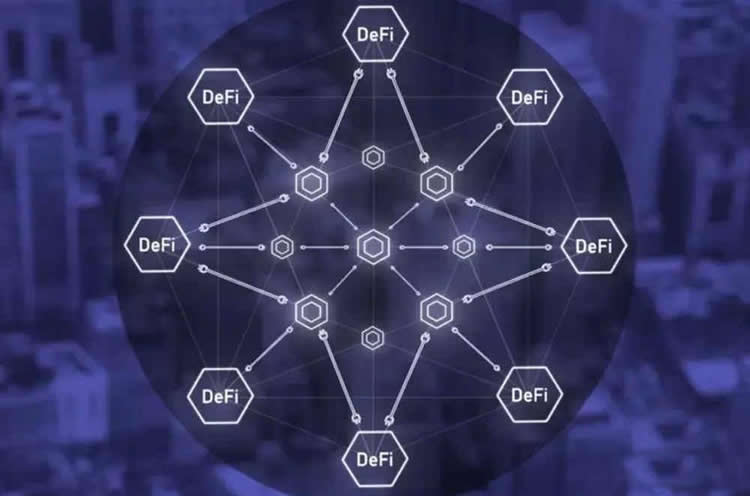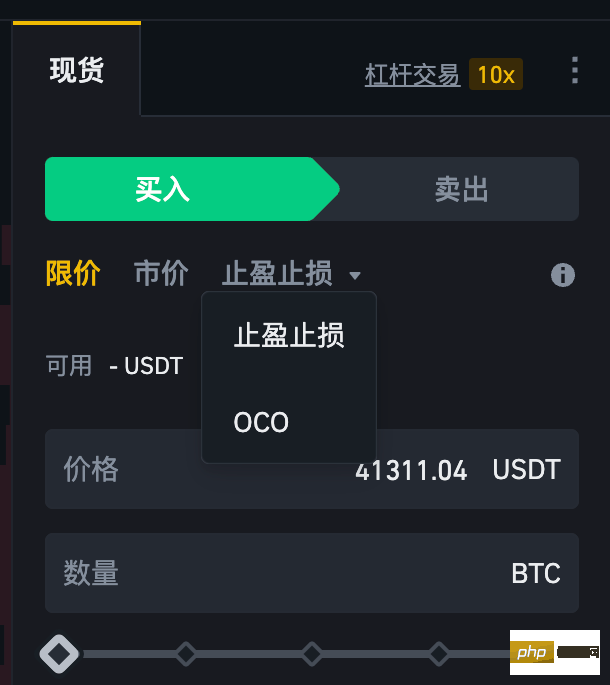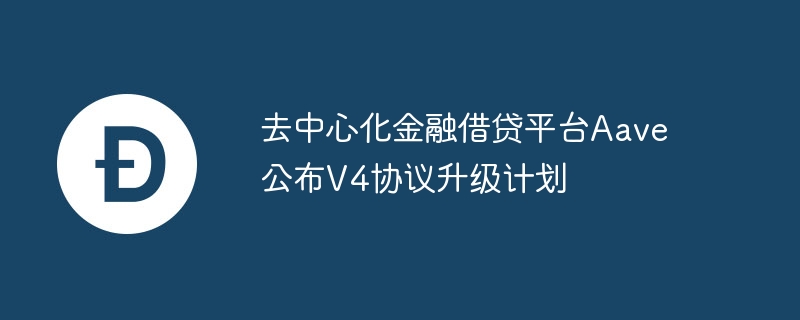The innovative application of Liquid Re-Staking Token and the development of the recently launched Blast, a public chain that supports Layer 2 automatic staking function, are leading a new wave in the field of DeFi staking. This Bing Ventures article will focus on the background behind this development, what this development means for the DeFi staking field, and the main current trends and prospects in this field.
Liquidity Re-Staking Protocol: The latest innovation in the LSD field
<img src="/static/imghwm/default1.png" data-src="https://img.php.cn/upload/article/000/465/014/171124388161504.png?x-oss-process=image/resize,p_40" class="lazy" alt="The new wave of DeFi staking: Liquidity re-staking tokens and Layer 2 public chains">Source: Bing Ventures
In the Ethereum ecosystem, especially after the Shanghai upgrade, the development of the field of Liquid Staking Derivatives has shown full innovation and adapt. Started with Lido, a player that plays a key role in the Ethereum staking mechanism. By providing a staking solution for Ethereum, Lido solves the significant problem of liquidity lock-in. Their approach allows users to stake Ethereum while maintaining some liquidity, which is a significant leap from the traditional, rigid staking paradigm.
The addition of Pendle Finance brings new opportunities to the LSD field. By tokenizing earnings, users can now leverage interest-based protocols to trade earnings. This new approach opens up new avenues for revenue optimization and risk management, injecting innovation into the field.
However, investors’ desire for higher returns and more efficient use of mortgage assets remains unfulfilled. Therefore, some more complex mechanisms have emerged, such as the re-pledge protocol Eigenlayer. Eigenlayer allows users to stake their Ethereum again, thereby improving the security and reliability of other protocols. This approach not only increases potential returns for investors, but also contributes to the resilience and security of the entire Ethereum network.
But a challenge quickly emerged, which was that tokens locked on Eigenlayer lost liquidity and became inactive, thus becoming limited in diversity in the DeFi space. This has led to the innovation of Liquidity Rehyping Tokens (LRT), a solution that unlocks the liquidity of these rehypothecated assets while allowing stakers to further increase their returns by participating in DeFi. Users can deposit LRT into the liquidity re-pledge protocol to obtain income.
As a result, the LSD field has grown from its humble beginnings as a single layer of pledges into a much more complex and multi-faceted ecosystem. Recent developments such as the launch of Blast exemplify this trend. Blast is an EVM-compatible Ethereum second-layer network that provides native ETH and stablecoin staking benefits on its chain, which further democratizes the acquisition of staking rewards and makes the process more user-friendly and diverse. This evolution of the LSD narrative highlights a dynamic and adaptable Ethereum ecosystem that is constantly innovating to meet user demands for greater liquidity and yields, while navigating the complexities and risks inherent in the world of decentralized finance. navigation.
The next narrative of DeFi: LRT

Source: Dune, Bing Ventures
In the DeFi field, the emergence of Liquidity Re-pledge Tokens (LRT) is a profound innovation to the traditional pledge model. LRT not only breaks the limitations of single pledge in concept, but also promotes the popularization of multi-protocol pledge enhancement in practice. Through the EigenLayer platform, users can cross the boundaries of a single protocol and stake their ETH resources in multiple Active Verification Services (AVS). This not only significantly improves the security of the network, but also injects more complexity into the DeFi ecosystem. security level.
The advantages of LRT are multifaceted: significant improvements in capital efficiency, enhanced network security, and huge savings in resource allocation for developers. However, at the same time, we should also be alert to the attendant risks: including potential fine risks, protocol centralization issues, and revenue dilution caused by fierce market competition.
In terms of the market prospects of LRT, we see the huge temptation of its high-yield potential. LRT provides ETH stakers with additional revenue channels, which include not only basic staking revenue, but also Eigenlayer rewards and potential token issuance. In addition, through incentives such as airdrops, LRT is expected to attract a wider range of user participation, thus driving the overall growth of DeFi leverage. This trend is expected to replicate or even surpass the success of the DeFi Summer of 2020.
The future trend is eye-catching. Driven by LRT, it is expected that a competitive situation similar to "Curve War" will emerge in the DeFi field, and token economics may evolve into a more complex veTokenomics model. At the same time, the introduction of the emerging AVS, through token rewards or its influence on the LRT protocol’s token issuance decisions, can become a key driver to attract ETH re-staking.
To sum up, LRT has demonstrated its unique value in unlocking liquidity, increasing returns, and optimizing governance and risk management. In this way, LRT is not only a staking tool, but also a key factor driving DeFi innovation and growth. Its development and application will bring profound changes to the DeFi ecosystem and open up new possibilities for users, developers and the entire blockchain world.
The risks and challenges associated with it
As a dark horse in the industry, Stader Labs’ recently launched liquid re-pledge token rsETH has attracted widespread attention on the Ethereum mainnet. Through rsETH, users can re-pledge existing liquid pledge tokens (such as Coinbase's cbETH, Lido's stETH, and Rocket Pool's rETH) on multiple different networks, and mint new liquid token representatives on this basis. Its share in the re-pledge agreement greatly enhances the flexibility and liquidity of pledged assets. With the support of EigenLayer, rsETH has achieved large-scale re-staking of ETH by simplifying the process for users to enter the re-staking ecosystem, further strengthening the decentralized nature of the Ethereum network.
However, this innovative financial instrument also brings many risks. Vitalik Buterin, the founder of Ethereum and the co-founder of EigenLayer, have pointed out that re-staking may lead to complex scenarios, which may pose a threat to the security of the main network. In addition, as more and more AVS and LRT emerge, excessive distraction of industry funds and attention may lead to market instability and weakening of governance structures.
As an emerging force in the Web3 ecosystem, Blast Layer2 public chain injects new vitality into Layer 2 solutions through its original automatic compounding function. The innovation of Blast is to provide basic income for deposits on the Layer 2 network, provide stable staking returns through cooperation with protocols such as Lido, and at the same time invest stablecoin assets in protocols such as MakerDAO to achieve additional income. Although Blast’s operating model brings convenience and benefits to users, its TVL composition and strategy also reveal potential centralization risks and market sensitivity issues.
The future challenge for Blast is how its strategy affects the actual utilization of assets and dynamic capital conversion within the ecosystem. Blast’s TVL strategy needs to change from static capital preservation to dynamic capital appreciation to ensure network vitality and Dapp’s liquidity. Only in this way can it truly achieve its goal of promoting the growth of the blockchain network, rather than just serving as a storage medium for capital.
Overall, the emergence of Stader Labs’ rsETH and Blast Layer2 public chains marks the innovation and progress of the staking model in the DeFi field. But while pursuing maximization of returns, we must also remain alert to the potential risks in these emerging models to ensure the security and healthy development of the Ethereum network. The future DeFi ecosystem will need to find a more robust and sustainable balance between innovation and risk management.
Imagination on the new gameplay of Ethereum staking
We believe that dynamic staking strategies like LRT are having a profound impact on the Ethereum staking market. First, the automation and efficiency of the strategy lower the investment threshold and attract more individual investors. Secondly, as more funds flow in, market liquidity increases significantly, which helps stabilize the entire DeFi ecosystem. In addition, dynamic staking strategies drive innovation and development in the market by providing diversified and customized investment options. However, the implementation of this strategy also faces technical challenges, especially building efficient and accurate algorithm models, as well as ensuring system security and resisting cyber attacks.

Source: Bing Ventures
At the same time, some new Ethereum staking paradigms other than LRT are also being explored and deserve attention.
Layered Staking System (Layered Staking System), as a new model, is emerging in the context of market maturity and investor demand diversification. The system distributes pledged assets across different risk tiers, each with different return potential and risk allocation. The low-risk tier provides relatively stable returns and is suitable for risk-averse investors, while the high-risk tier is suitable for investors with higher risk tolerance. The system's flexibility allows investors to allocate assets based on their own risk appetite and market forecasts. Implementing a tiered pledge system requires complex smart contracts and sophisticated risk management strategies to ensure the liquidity and security of assets at each level. The emergence of the tiered staking system provides investors with more choices and flexibility, pushing the Ethereum staking market toward a more mature and diversified direction.
In addition, the automated pledge strategy based on smart contracts automatically executes pledges, releases pledges or reallocates pledged assets through smart contracts, improving the efficiency and effectiveness of asset management. The risk management capabilities of automated staking strategies are enhanced by specific risk parameters set by smart contracts that automatically adjust staking positions once market conditions trigger these parameters. Despite challenges such as ensuring the security and reliability of smart contracts, it is expected that as technology develops, the security of smart contracts will be enhanced, promoting the application of automated staking strategies in a wider range of fields.
The collective staking and shared revenue model enables multiple investors to jointly pledge their assets and share the generated revenue in proportion. This model automatically distributes income through smart contracts, providing small investors with the opportunity to cooperate and add value. Smart contracts play a central role in the collective staking model, automatically executing income distribution and ensuring that each participant receives fair income. Collective staking provides small investors with the opportunity to reduce risks and costs, increasing the inclusivity of the DeFi ecosystem.
Finally, linking pledged assets to physical assets (RWA) is an innovative development in the DeFi field. Under this model, physical assets such as real estate, artwork, etc. can be used as the underlying assets of the pledged assets, which are represented on the blockchain through tokenization and used for pledge. This provides liquidity to assets that are typically illiquid, providing owners of physical assets with a new source of funding. Despite challenges, such as ensuring accurate valuation and tokenization of physical assets, and dealing with regulatory and compliance issues related to physical assets, the model of linking pledged assets to RWA is expected to be more widely used in the future, providing traditional assets with It provides holders with new funding channels, provides cryptocurrency investors with new investment opportunities, and deepens the integration of the cryptocurrency market with traditional financial markets.
In short, the DeFi staking field will usher in more innovation and development in the future, which is worthy of the attention of investors and DeFi players.
The above is the detailed content of The new wave of DeFi staking: Liquidity re-staking tokens and Layer 2 public chains. For more information, please follow other related articles on the PHP Chinese website!
 Lulo, a Solana-based Yield Aggregator, Saw Its TVL Double to $38.7M Since AugustAug 27, 2024 pm 09:10 PM
Lulo, a Solana-based Yield Aggregator, Saw Its TVL Double to $38.7M Since AugustAug 27, 2024 pm 09:10 PMThe yield aggregator launched at the beginning of the year and has continued to grow even during DeFi market downturns.
 DeFi和区块链的区别究竟是什么?Jul 12, 2024 am 02:06 AM
DeFi和区块链的区别究竟是什么?Jul 12, 2024 am 02:06 AMDeFi即去中心化金融,是基于区块链技术的一种金融系统,旨在创建无需中介机构(如银行、经纪公司)的金融服务。区块链是一种去中心化的分布式账本技术(DLT),用于记录交易和数据。而很多初学者在进入币圈市场时,很难弄懂DeFi和区块链的区别究竟是什么?根据已有资料分析来看,DeFi和区块链的区别在本质、功能和目的、范围和应用以及技术实现等方面。接下来小编为大家详细说说。DeFi和区块链的区别究竟是什么?DeFi和区块链在本质、功能和目的、范围和应用以及技术实现等方面存在差异,区块链是去中心化的数据存
 什么是OCO订单?Apr 25, 2023 am 11:26 AM
什么是OCO订单?Apr 25, 2023 am 11:26 AM二选一订单(OneCancelstheOther,简称OCO)可让您同时下达两个订单。它结合了限价单和限价止损单,但只能执行其中一个。换句话说,只要其中的限价单被部分或全部成交、止盈止损单被触发,另一个订单将自动取消。请注意,取消其中一个订单也会同时取消另一个订单。在币安交易平台进行交易时,您可以将二选一订单作为交易自动化的基本形式。这个功能可让您选择同时下达两个限价单,从而有助于止盈和最大程度减少潜在损失。如何使用二选一订单?登录您的币安帐户之后,请前往基本交易界面,找到下图所示的交易区域。点
 Discover the potential of affordable DeFi coins that could see massive growth in the coming yearJul 28, 2024 am 09:39 AM
Discover the potential of affordable DeFi coins that could see massive growth in the coming yearJul 28, 2024 am 09:39 AMThis article delves into digital assets priced under a dollar, with the promise to soar a hundredfold in 2024. Uncover which tokens are on the radar
 Proof of Liquidity (PoL) and Fair Token Offering (FTO): A Symbiotic RelationshipJul 28, 2024 am 06:08 AM
Proof of Liquidity (PoL) and Fair Token Offering (FTO): A Symbiotic RelationshipJul 28, 2024 am 06:08 AMLiquidity has been the backbone of DeFi (decentralized finance) since its inception. However, securing liquidity through locked capital is detrimental to DeFi in the long term. This realization acted as a catalyst behind the inception of Berachain's
 Best DeFi Tokens Under $1 Poised for 100x Returns in 2024Jul 28, 2024 am 03:52 AM
Best DeFi Tokens Under $1 Poised for 100x Returns in 2024Jul 28, 2024 am 03:52 AMAs the world of decentralized finance continues to evolve, certain under-the-radar tokens are capturing attention. Priced under $1, these digital assets are showing potential for massive growth. This article will delve into the top picks that could a
 去中心化金融借贷平台Aave公布V4协议升级计划May 03, 2024 am 08:20 AM
去中心化金融借贷平台Aave公布V4协议升级计划May 03, 2024 am 08:20 AM在所有提出的升级提案中,一个值得引人注目的部分是专注于增长协议的算法稳定币GHO。去中心化金融(DeFi)借贷协议AaveLabs最近公布了其未来五年的发展蓝图。根据该公司提出的计划,他们打算将协议升级至新一代的V4版本,并且他们希望就这一提案获得社区的反馈。同时,Aave也强调,V4的升级仅是其Aave2030赠款提案这一更广泛规划的一部分。AaveV4:提案AaveLabs团队宣布,他们的提案目标是对该协议进行全面改革,涉及对Aave网络进行“重大升级和扩展”。这些更新将包括引入跨链流动性层
 什么是Taproot,它又如何让比特币受益?Apr 14, 2023 pm 04:43 PM
什么是Taproot,它又如何让比特币受益?Apr 14, 2023 pm 04:43 PM摘要Taproot是比特币网络的一次升级,于2021年11月14日上线。自SegWit问世以来,Taproot与Schnorr签名一直是备受期待的比特币技术升级。Taproot旨在改变比特币脚本的运作方式,提升私密性、可扩展性与安全性。Taproot与名为Schnorr签名的相关升级结合后,将有望实现上述目标及更多计划。所有熟悉加密货币社区的用户都知道,私密性、可扩展性与安全性是社区关注的重点。虽然比特币是全球最热门的加密货币,但这些问题仍有待解决。Taproot的目标正是解决上述问题。导语比特

Hot AI Tools

Undresser.AI Undress
AI-powered app for creating realistic nude photos

AI Clothes Remover
Online AI tool for removing clothes from photos.

Undress AI Tool
Undress images for free

Clothoff.io
AI clothes remover

AI Hentai Generator
Generate AI Hentai for free.

Hot Article

Hot Tools

SublimeText3 Chinese version
Chinese version, very easy to use

SublimeText3 English version
Recommended: Win version, supports code prompts!

MantisBT
Mantis is an easy-to-deploy web-based defect tracking tool designed to aid in product defect tracking. It requires PHP, MySQL and a web server. Check out our demo and hosting services.

Dreamweaver CS6
Visual web development tools

WebStorm Mac version
Useful JavaScript development tools






